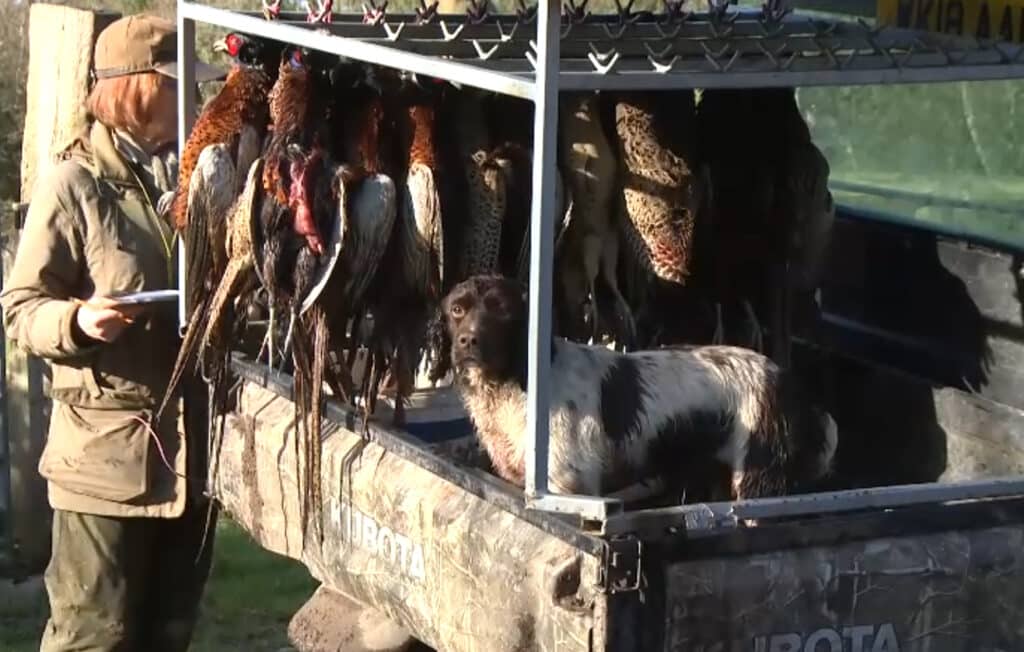On August 11th, the day before the ‘Inglorious 12th’ and the start of grouse shooting, we reported that a case of highly-infectious Avian Flu had been detected in a Red Grouse. Given how Red Grouse are bred to create a ‘surplus’ for shooting (in other words, bred at far denser population levels than would occur on an unmanaged moorland), it was unsatisfactory that (as we put it at the time) “details are – to say the least – scant”.
All that was known was that a Red Grouse somewhere in the Scottish Borders was confirmed to have the Highly Pathogenic Avian Flu H5N1 virus sometime in Week 30 ( July 24 – July 30 2023). No more location details were provided and there was no comment that we could find in the national media.
Red Grouse are at least wild birds. They are not hatched and reared in sheds or pens, but out on the moors. That of course is not the case with pheasants and partridges, which are bred in huge numbers simply to be shot for ‘fun’.

Which makes news on the Animal and Plant Health Agency’s ‘Avian influenza in wild birds: 2023‘ that four pheasants have been confirmed with Avian Flu somewhere in Moray, Scotland in Week 35 (August 28 to September 3, 2023) very concerning.
Where in Moray? As yet the details don’t appear to have been published, but the non-native Common Pheasant reared for shooting is the only pheasant species in the UK, and the start of the pheasant shooting ‘season’ is now just three weeks away (guns will start killing pheasants on October 1st). That date will bring the scattering across the countryside of literally millions of pheasants that will by now have already been released onto shooting estates.
It begs the question, how many of them will be carrying the Avian Flu virus and might be allowed to potentially cross-infect each other and wild birds rather than be removed from the remorseless attention of shooters across Scotland (many of whom are probably already turning a blind eye to the illegal persecution of birds of prey on the country’s grouse moors)?
Not an isolated case
Pro-shoot lobbyists may well say that this is just four pheasants amongst millions. So what?
In fact, Avian Flu outbreaks in pheasants were taking place in Scotland all through August
The Livetec Systems website lists, for example, the following:
- On the 18th August 2023, highly pathogenic avian influenza H5N1 was confirmed on a premises used for ” Rearing Of Game Birds For Purposes Unrelated To Agriculture” near Forfar, Angus in Scotland. The birds on the premises were to be killed and a disease control zone put in place around the premises.
- At a premises in Scotland, near Kirkcudbright, Dumfries and Galloway a case of avian influenza H5N1 was confirmed in pheasants in release pens on the 14th August 2023. Protection zones were put in place and the birds were to be killed.
- On the 14th August 2023 a case of highly pathogenic avian influenza H5N1 was confirmed in pheasants in release pens near Fraserburgh, Aberdeenshire. To stop the spread of disease a 3km Protection Zone and 10km Surveillance Zone was put in place around the premises.
- A second case of avian influenza H5N1 was confirmed in pheasants near Fraserburgh, Aberdeenshire on 14 August 2023. At 9:03 pm a 3 km Protection Zone and 10 km Surveillance Zone were declared around the premises.
- On the 8th August 2023 a case of highly pathogenic avian influenza (HPAI) H5N1 was announced in pheasants at a game farm near Portsoy, Aberdeenshire. To stop the spread of disease a 3 km Protection Zone (PZ) and 10 km Surveillance Zone (SZ) has been put in place and the birds were to be killed.
These birds are very valuable to a shoot – at least they are if they can be kept alive long enough to be sold to a client with a gun. If it comes to a choice between killing them or hoping no one notices and selling them to shooters at vastly inflated prices anyway…?
If the deaths of birds bred to be killed at a few months old isn’t horrible enough, Avian Flu has also been ripping through wild bird populations. First detected in the vast poultry sheds of East Asia over a decade ago, the virus has now spread around the world and may have killed millions of birds.
It has been particularly destructive amongst seabirds because they tend to breed in tightly-packed colonies where the virus easily spreads in nasal secretions and excreta (in fact, the Livetec Systems page references an outbreak on the isle of Lewis saying that “coastal poultry farmers should be particularly vigilant and ensure iron tight biosecurity is in place”).
Tightly packed? Spreads in nasal secretions and excreta? That sounds much like the typical conditions found in the pens that pheasants are kept in before release in the late summer – and especially worrisome when shared grain feeders and shared water supplies are thrown into the unhygienic mix as well.

